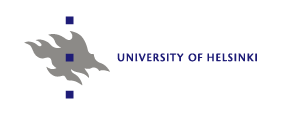- FIN-CLARIAH Research Infrastructure
A new national research infrastructure initiative FIN-CLARIAH for...
8.12.2021 8:12 by eahyvone - WarMemoirSampo published on December 3, 2021
A new “Sampo” application, “WarMemoirSampo”...
8.12.2021 8:04 by eahyvone - Five new SeCo papers accepted for the ISWC 2021
The 20th International Semantic Web Conference (ISWC 2021), the...
2.8.2021 6:53 by eahyvone
- Annastiina Ahola, Lilli Peura, Rafael Leal, Heikki Rantala and Eero Hyvönen: Using generative AI and LLMs to enrich art collection metadata for searching, browsing, and studying art history in Digital Humanities
- Eero Hyvönen, Petri Leskinen, Alexandre Lionnet, Blandine Blukacz-Louisfert, Pierre-Etienne Bourneuf, Davide Rodogno, Grégoire Mallard, and Florian Cafiero: Linked Open Data Approach to Study the Assembly Minutes of International Organizations and Their Underlying Prosopography in the Real World Context
- Eero Hyvönen, Petri Leskinen, Alexandre Lionnet, Blandine Blukacz-Louisfert, Pierre-Etienne Bourneuf, Davide Rodogno, Grégoire Mallard, and Florian Cafiero: A Linked Open Data Infrastructure for Studying Historical Activities of International Organizations: First Results on the League of Nations (1920-1946)
- Petri Leskinen, Eero Hyvönen, Alexandre Lionnet, Blandine Blukacz-Louisfert, Pierre-Etienne Bourneuf, Davide Rodogno, Grégoire Mallard, and Florian Cafiero: A Linked Open Data Service and Semantic Portal to Study the Assembly Minutes and Prosopography of the League of Nations (1920–1946)
AMMO Ontology of Finnish Historical Occupations
AMMO ontology provides a harmonized view of Finnish historical occupations from early 20th century. It is based on manually harmonizing 4564 distinct occupational labels from 3 different source datasets. The source datasets are WW1 War Victims, WW2 Death Records, and WW2 Prisoners of War. AMMO occupations are linked to international HISCO classification, providing social stratification information through HISCLASS and HISCAM, as well as to Finnish Classification of Occupations. AMMO is modeled using SKOS. The ontology structure is provided through the hierarchies of HISCO and Classification of Occupations.
AMMO can be queried with SPARQL from the endpoint https://ldf.fi/ammo/sparql, or accessed locally as Turtle files or a dockerized SPARQL endpoint via GitHub.
The AMMO ontology is created as a part of the projects WarCasualtySampo 1914-1922 and WarSampo.
Sources of Occupational labels
WarSampo datasets of war casualties and prisoners of war.
WarCasualtySampo 1914-1922 dataset.
Sources of Contextual Information
Classification of Finnish Occupations 1980 contains parts of the occupation hierarchy, and the social classification, related to AMMO occupations, published in Classification of occupations 1980 (Ammattiluokitus 1980) by Statistics Finland (Tilastokeskus).
HISCO resource labels and hierarchy used with permission from the HISCO database. http://hdl.handle.net/10622/JA9B8O, IISH Dataverse, V1. Described in Van Leeuwen, M.H.D., Maas, I., Miles, A.: HISCO: Historical international standard classification of occupations. Leuven University Press (2002). See also the historyofwork.iisg.nl website and HISCO book (see: DOI:10.3200/HMTS.37.4.186-197).
HISCLASS classification used with permission, from Maas, I., & Van Leeuwen, M. H. (2005). Total and relative endogamy by social origin: A first international comparison of changes in marriage choices during the nineteenth century. International review of social History, 50(S13), 275-295. https://doi.org/10.1017/S0020859005002142
HISCAM measures based on Lambert, P. S., Zijdeman, R. L., Van Leeuwen, M. H., Maas, I., & Prandy, K. (2013). The construction of HISCAM: A stratification scale based on social interactions for historical comparative research. Historical Methods: A Journal of Quantitative and Interdisciplinary History, 46(2), 77-89. https://doi.org/10.1080/01615440.2012.715569


